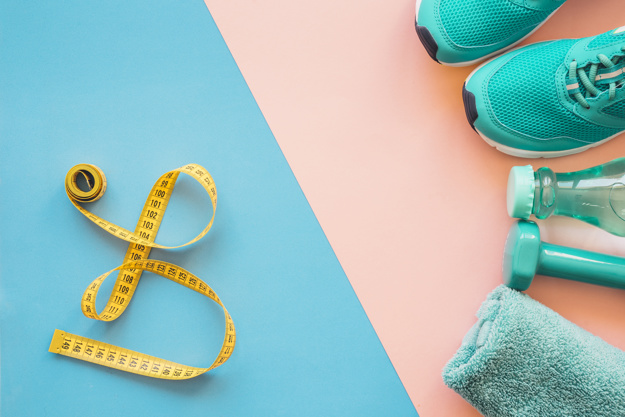Body Composition Assessment Methods
The human body consists of fat tissue and fat-free tissue. Components of fat-free mass are muscle, bone, water and organ tissue. Fat tissue is divided into essential fat and storage fat. It is important that all these body components are in the ideal range to have a healthy body composition. These ideal ranges, on the other hand, differ between sexes. While men have more muscle mass (~ 45%) than women (~ 36%), their fat mass (~ 12-20%) is less than women (~ 20-30%).
The Importance of Having an Ideal Body Composition
Having an ideal body composition minimizes health risks and is important for athletes to achieve optimal performance. Having a very high fat percentage increases the risks of diseases such as cardiovascular diseases, diabetes and cancer, while having a lower than ideal fat percentage leads to reproductive, circulatory and immune system problems.
Body Composition and Sports Performance
Although body weight, shape, and composition contribute to success in various sports branches, there is no single or strict ideal body composition for athletes and sports branches. For example; in power and strength sports, athletes target muscle hypertrophy in certain periods of preparation for competition, while in sports branches such as combat sports, athletes aim to compete at the lowest body weight category they can reach and aim to maximize lean mass within this goal. While team athletes can increase their speed and agility by preserving their fat-free body mass, athletes engaged in acrobatic sports use this to move their bodies in a smaller area and gain biomechanical advantages.
Assessing Body Composition
Considering its effects on health and performance, it is extremely important to evaluate body composition regularly and try to optimize it. Body composition can be evaluated using different methods including laboratory and field:
Laboratory Methods
- Hydrostatic Weighing: It is a method by which the athlete is weighed by being completely immersed in water to measure the body volume. With this method, also known as underwater weighing, it is possible to obtain an accurate result about body composition, but using a pool requires cost, space, time and trained personnel.
- Bod Pod: In this method, similar to hydrostatic weighing, the body volume is determined by displacement of the air instead of immersing it in water. In order not to affect the air replacement, the athlete should wear a minimal, form-fitting clothing and a bonnet. The limitation of this method, which gives accurate results about body composition, is the cost of equipment and the need for trained personnel.
- Dual-energy X-ray absorptiometry (DXA): DXA, which separates muscle and fat tissue according to the passage of X-rays of different intensities through the body, is considered as the gold standard in body composition measurement. It determines both the total and regional fat and fat-free mass distribution. It can also measure visceral (intra-abdominal) fat tissue and bone mineral density. Although it can be considered superior to other methods, DXA is quite costly. Finally, the radiation of DXA is low contrary to popular belief; It is equivalent to a 2-hour flight or 1/40 of a standard chest x-ray.
Field Methods
- Skinfold Thickness: This method is a widely used method to determine body composition. A caliper is used to determine the skinfold thickness at several sites of the body. Then, a population-based equation is used to estimate the body fat percentage. While it is advantageous for the caliper to be inexpensive and portable, the accuracy of the data is moderate and varies from person to person. Also, the equation is not very suitable for the athlete population.
- Bioelectric Impedance (BIA): An undetectable electric current is delivered to the body. Since the water content of the fat-free mass is higher, the current flows easily through the muscles, while encounters resistance in the fat mass containing less water. This method, in which the body composition is determined according to the conductivity, is cheap and easy to use, but it is directly affected by hydration and contains up to 40% error margin.
Results
It is critical to have an ideal body composition and to evaluate body composition at regular intervals. Assessment method can be chosen according to the needs as well as considering the pros and cons of the evaluation methods. In scientific studies and institutions with laboratory facilities, DXA may be preferred primarily, and in cases where it is not accessible, hydrostatic weighing or bod pod can be preferred. If the purpose of evaluation is to examine the effect of an intervention such as diet or exercise on a non-athletic population in a practical way, the easily accessible skinfold thickness or BIA method can be used.
|
Method |
Advantages |
Disadvantages |
|
Skin fold thickness |
Low cost Easy to use Portable Time saving |
Invasive Not suitable for the athletic population Requires skill Differences are observed among those who measure |
|
Hydrostatic Scale |
High accuracy rate |
Takes time Requires pool/water tank Requires skill |
|
BodPod |
Easy to use Time saving High accuracy rate |
High cost May require trained personnel to operate |
|
Bioelectric Impedance Analysis (BIA) |
Low cost Easy to use Portable Time saving |
Sensitive to the hydration state of the individual (therefore measurement error is high) |
|
DXA |
Very high degree of accuracy Noninvasive Fast (5-10 minutes) Bone density can be measured |
Very expensive May require trained personnel to operate |
Reference
- Powers, S. K., Howley, E. T., & Quindry, J. (2007). Exercise physiology: Theory and application to fitness and performance (pp. 423-428). New York, NY: McGraw-Hill.
